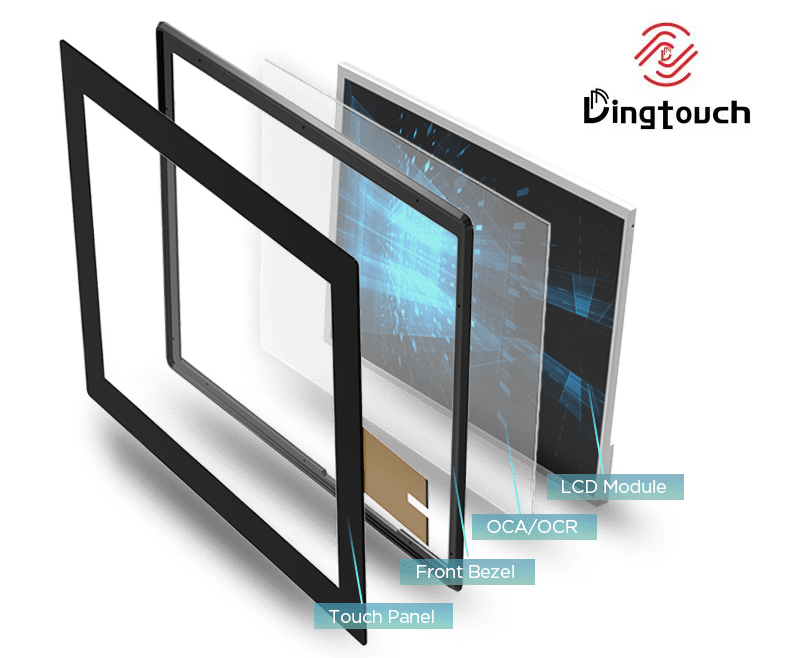News
Comprehensive Analysis of the Advantages and Disadvantages of Capacitive Touch Screen: From Technical Principles to Practical Applications

Comprehensive Analysis of the Advantages and Disadvantages of Capacitive Touch Screen: From Technical Principles to Practical Applications

With the rapid advancement of human-machine interaction technologies, capacitive touch screen have become an indispensable interface across modern devices. They are widely used in smartphones, industrial control systems, medical equipment, automotive displays, and smart home devices. This article provides a thorough breakdown of the strengths and limitations of capacitive touch screen, helping readers better understand their technical characteristics and application scenarios.
I. Core Advantages of Capacitive Touch Screen
1. Highly Responsive Touch, Natural User Experience
Capacitive screens operate based on the electric current induced by the human body. They do not require pressure, only a light touch, offering a smoother and more intuitive interaction compared to resistive screens.
2. High Stability with Little to No Calibration Required
Unlike resistive touch screens, which often require periodic recalibration, capacitive screens typically need only one calibration during production—or none at all—significantly reducing maintenance time and effort.
3. No Moving Parts, Longer Lifespan
Capacitive screens use electrostatic fields to detect touch, meaning there are no mechanical components involved. This makes them more durable and ideal for high-frequency, intensive use environments.
4. Better Light Transmission and Lower Power Consumption
Compared to resistive technology, capacitive touch screens offer higher optical clarity and consume less power, resulting in clearer displays and improved energy efficiency.
5. Support for Multi-Touch and Gesture Control
Capacitive screens naturally support multi-touch input and gesture recognition, which greatly enhances interactivity and operational efficiency, especially in smartphones, tablets, and interactive kiosks.
6. Excellent Scratch Resistance and Low Maintenance
The outer surface is typically made of toughened glass (such as G+G structure), which is highly scratch-resistant and durable, making it suitable for harsh environments and reducing long-term maintenance costs.
7. Adaptable for Various Screen Sizes
Surface capacitive technology is suitable for large screens, while projected capacitive technology excels in small to medium-sized screens—providing flexible options for a range of applications.
II. Potential Disadvantages and Challenges of Capacitive Touch Screen
1. Uneven Light Transmission and Color Distortion
Due to the multi-layered composite structure (typically four layers), light reflection between layers can cause image blurring or uneven color rendering, which may impact visual quality.
2. Susceptibility to Electrical Interference and False Touches
Because capacitive screens use the human body as a conductor, nearby conductive objects can interfere with performance, potentially causing false touches. This issue is especially problematic in high-humidity environments. For example, if a user's hand is within 7 cm of the screen, or their body within 15 cm, unintended input may occur.
3. Unresponsive to Gloves or Non-Conductive Materials
Capacitive screens generally cannot detect touch through regular gloves or non-conductive tools (like a wooden or plastic stylus). A specialized capacitive stylus or conductive gloves are required.
4. Drift Issues Due to Environmental Changes
Capacitive screens can experience touch drift when surrounding temperature, humidity, or electromagnetic fields change. Common causes include: screen warming after power-up, user's body proximity, or movement of large nearby objects. These factors affect the screen’s ability to accurately locate touch points.
5. Complex Repair and High Cost of Damage
Though the outermost layer is scratch-resistant silicon dioxide glass, it is vulnerable to impact. A small crack or chip can damage the internal ITO layer, rendering the screen inoperable. Repairs are often costly and may require complete replacement.
6. Nonlinear Response and Complex Signal Processing
Capacitive screens translate electrical signals from four corners into Cartesian coordinates. This process is influenced by differences in users' finger size, moisture level, and body conductivity—resulting in nonlinear current values and complex calculations. Once drift occurs, the controller has no origin reference to recalibrate, requiring manual intervention in the field.
III. Technological Advancements and Future Trends
To address these disadvantages, the industry continues to innovate:
-
Improved Anti-Interference Algorithms: Enhanced IC software now adapts more effectively to environmental noise and electrical disturbances.
-
Advancement in Capacitive Styluses: Modern capacitive pens are more compatible and precise.
-
Glove-Touch Support: Technologies now allow capacitive screens to function with conductive gloves.
-
Material and Optical Enhancements: High-transparency glass, AR coatings, and optical bonding (OCA) have significantly improved brightness, visibility, and performance in bright environments.
IV. Application Advice and Selection Guidelines
When choosing a touch screen technology, consider the application needs and operating environment:
-
For precise stylus input → A resistive screen may be more appropriate.
-
For high-quality visuals and gesture control → Capacitive screens are the better choice.
-
For complex environments (wet hands, gloves, EMI) → A customized capacitive solution with enhanced anti-interference performance is recommended.
Conclusion
Capacitive touch screen are widely adopted due to their high responsiveness, durability, and support for multi-touch gestures. However, challenges such as environmental drift, sensitivity to interference, and limited compatibility with gloves still exist. Fortunately, ongoing innovations in materials, algorithms, and hardware are continuously improving performance. As a result, capacitive technology is expected to play an increasingly important role in advanced and professional display applications.
CATEGORIES
CONTACT US
Contact: Dingtouch
Phone: +8615815536116
Tel: +8615815536116
Email: sales@szdingtouch.com
Add: Building A, Bailu Plaza, No. 48, Gonghe Industrial Road, Gongle Community, Xixiang Street, Baoan District, Shenzhen,China. 518126
 Dingtouch
Dingtouch